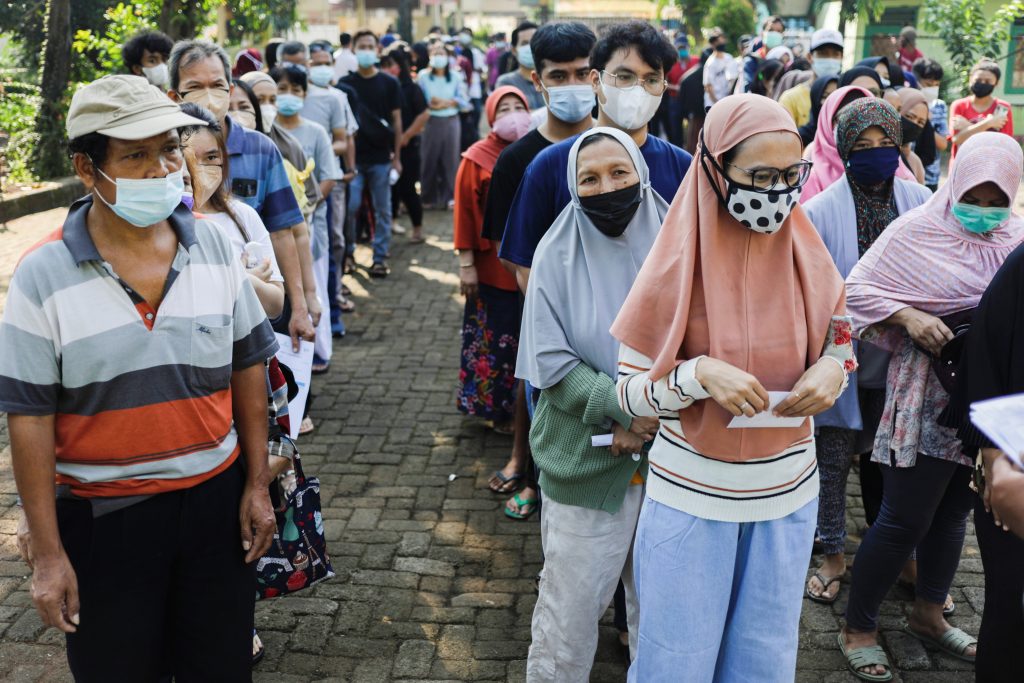
As Indonesia grapples with a devastating wave of coronavirus infections, Jakarta government data shows a fall in cases and easing pressure on hospitals in the capital, even as the situation worsens in other parts of the archipelago.
The capital, home to about 10 million people and three times that figure when counting those who live in surrounding towns, has been the epicenter of an outbreak that has pushed hospitals to the brink, with desperate scenes of people queuing for oxygen and being treated in parking lots.
But over two weeks Jakarta’s daily cases dropped from 14,619 on July 12 to 2,662 on July 25, according to city data, while pressure on COVID-19 referral hospitals has eased.
“The situation is very different,” Jakarta Governor Anies Baswedan said in a video address on Monday.
“The hallways in front of emergency (hospital) units were always full…. Now they’re mostly empty,” he said.
The positivity rate, or the percentage of people testing positive to COVID-19, almost halved from 31.2% on July 15, to 15.9% on July 25, the data showed.
The bed occupancy rate in Jakarta hospitals has also fallen to 73% from 90% earlier this month, although the occupancy rate in intensive care remained high, at 89%, official data showed.
Still, Anies stressed the pandemic was not yet over, particularly with the positivity rate several times higher than the guideline set by the World Health Organization.
President Joko Widodo announced on Sunday that some social restrictions would be eased in a move that public health experts said was largely driven by economic concerns.
Iwan Ariawan, a biostatistician at the University of Indonesia, told Reuters that Jakarta’s cases were falling and “the epidemic curve is beginning to show its decelerating phase.”
Adib Khumaidi, head of the mitigation team at the Indonesian medical association, told a news briefing that while Jakarta and some other areas in Java had seen lower cases, other regions, such as Sumatra, Kalimantan and Sulawesi, were seeing spikes.
Demand for oxygen in South Kalimantan doubled from June to July, said Muhamad Muslim, head of its provincial health agency while hospital emergency units filled as cases jumped by over 200%.
In Yogyakarta, also on Java, and in East Kalimantan, on Indonesian Borneo, bed occupancy rates have surpassed 80%, according to health ministry data.
Source: Licas Philippines
0 Comments